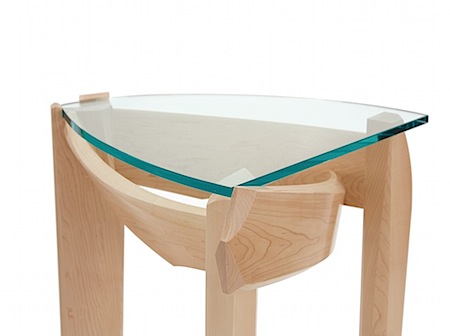Bench #5 Casting The Legs: Vine
I have been having some fun playing around with Twitters new creation Vine. For those of you who are not familiar with Vine it is a video sharing site that is limited to 6 second videos that loop. The Vine app on iPhone helps you start and stop in order to get the most out of your 6 seconds. I have made a few Vines as I cast the legs for a group of benches that I am in the process of making.
This is Bench #5 From Series #2
Here is a link to this Modern Outdoor Bench in my portfolio
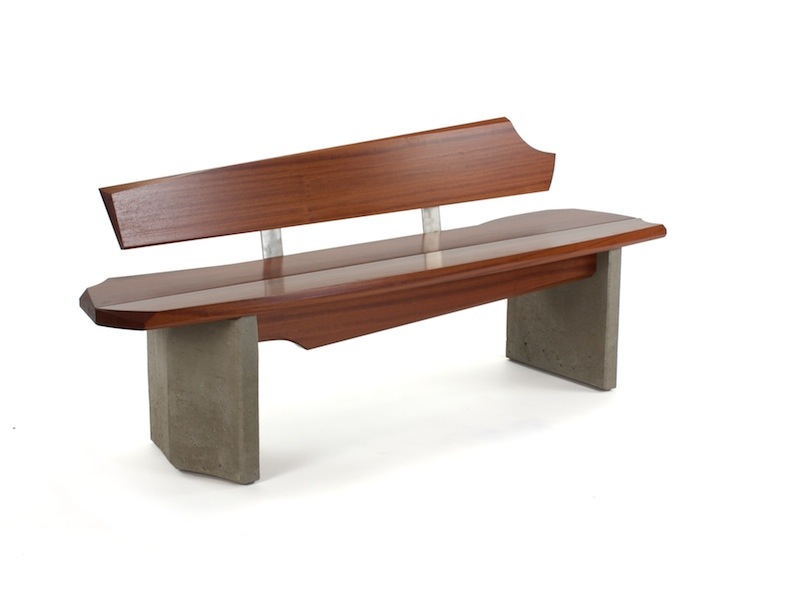
Here is the fist Vine of the casting form being assembled. THis one is a bit jumpy. Sorry!
Next up is a Vine of the form being filled.
Last one is the cured leg being removed from the forms.
All in all I have to say that I have enjoyed making these short videos. If you want to see more feel free to follow me on Vine.
My Design Process: Nico Yektai
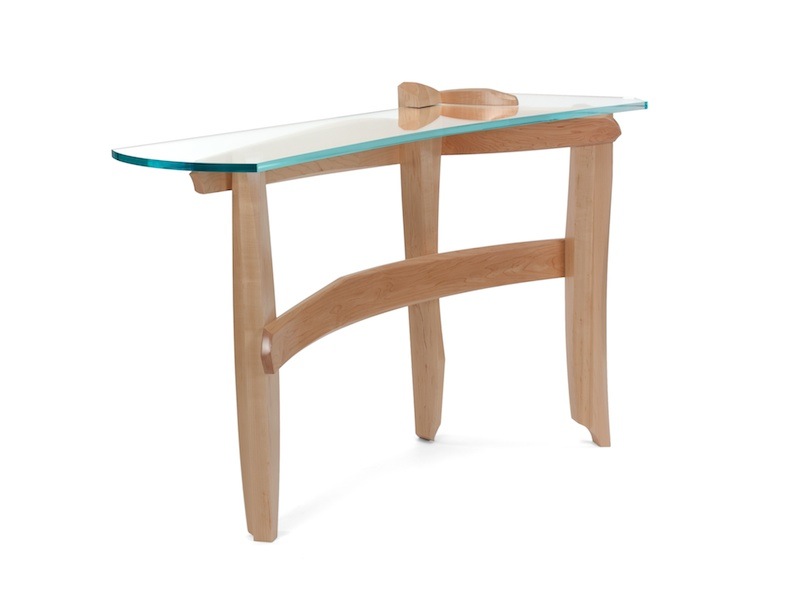
Curved Glass Hall Table Handmade by Nico Yektai
Today I’d like to use my curved glass hall table as an excuse to talk about my design process. This piece began with a simple notion that I wanted to add a three legged console table to my greater body of work. My style revolves around the idea of using asymmetrical composition and my unusual approach craftsmanship to introduce spontaneity to the furniture design process.
If I am building a piece for a client or if I have a lot of detail to work out, I will take the time to make an intricate scale model where I can figure everything out ahead of time. I have built enough furniture to know that with this table, I don’t need to take that step and I can go straight to the final materials.

Scale model for an unbuilt chaise lounge.
I keep an inventory of steamed bent maple curves on hand for just this occasion. I grabbed a few and went to my work bench and began to juxtapose them until I was able to find a start of a meaningful composition. This is the moment when a piece really comes to life. The curve of the stretches inform the shaping of the glass, together the two started to lay out a path forward for the legs which were not yet involved in the composition.
If you look at my greater body of work, you might notice that I tend to like to bring the legs of tables to the outside, and on occasion to bring them up over the horizontal surface of the table. I use that moment as something unexpected. These are the moments that can bring a viewer in for a closer look while calling attention to the fact that this is not an ordinary piece of furniture.
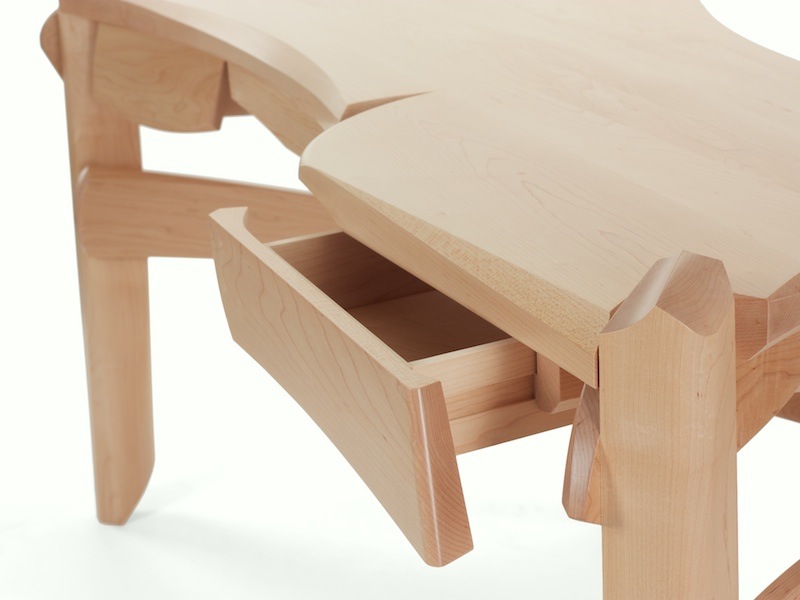
Detail of Desk #2 showing the leg coming above the table surface
The first thing I did to the legs is I cut aggressive scoops and sharp facets into the legs where they transition to the floor plane. I think of this as a device to enliven that transition to the floor, essentially picking the pieces up on tip toes sending the viewers eye up and into the piece. I use the back leg to pinch the glass which helped to stabilize it.
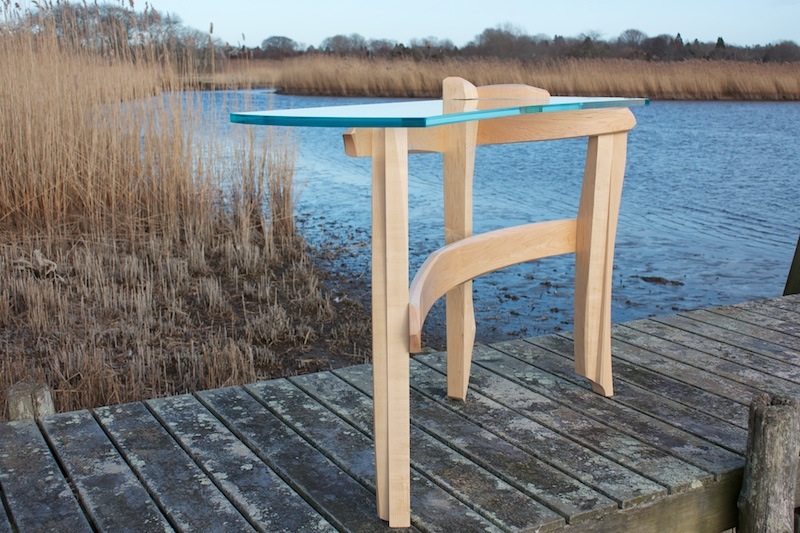
Photo shoot of Curved Glass Hall Table at Sagg Pond
More importantly, it ended in a wooden mountain poking up above the horizontal plane of the glass. I even added another ridge that comes out from it that mimics a curve beneath the glass.

Detail showing Back leg pinching the glass
The idea is I want to bring the viewers hand and then eye to the similarity between the curve over and under the glass. Because once you pick it up, my hope is that you get back into the curves beneath and come around to the piece again.
Thanks for taking the time to explore my design process.
Nico
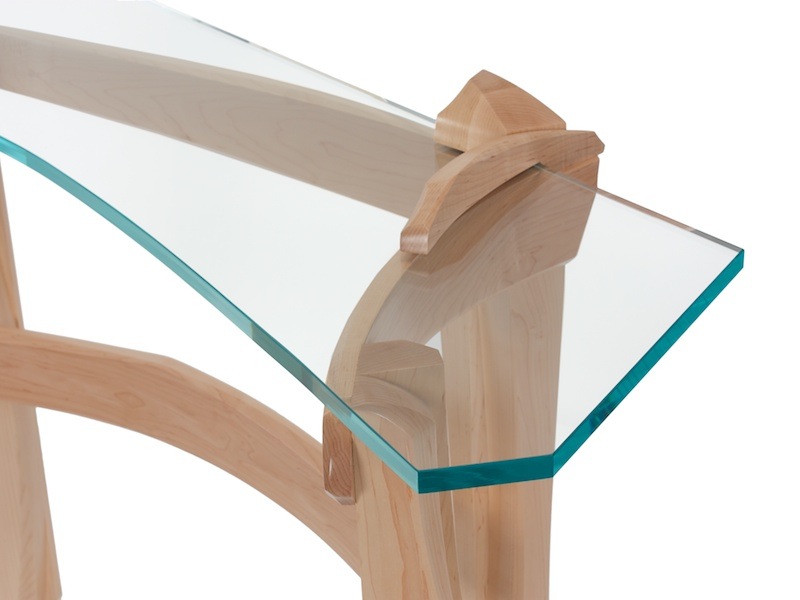
Tables With Glass
I am currently building a new table which will feature a glass top. I wanted to take a moment to visit my previous tables. The new table is at a formative moment and I want to make sure that I will be pushing new ground!
My tables have demonstrated a progression:
The first tables that I designed took advantage of the clear nature of glass to reveal the complex movement of the structure below the table.
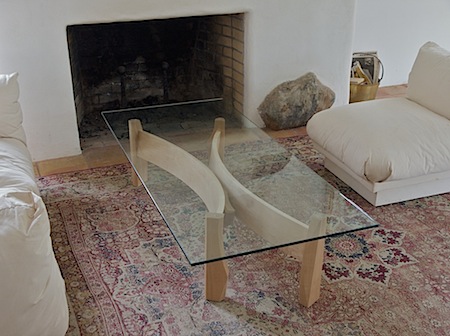
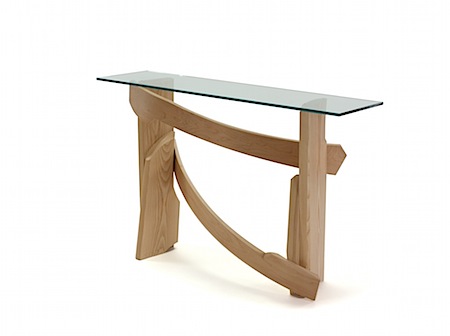

I revisited the Glass Hall Table format and demonstrated a different approach to the wooden structure.
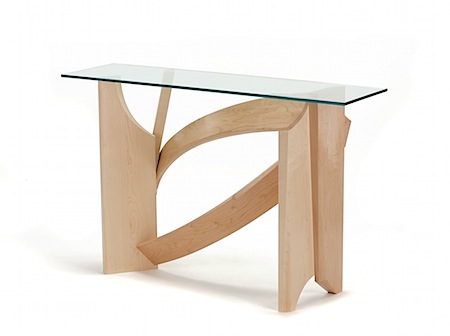
Glass Hall Table
Maple and Glass 35″H x 54″W x 15″D
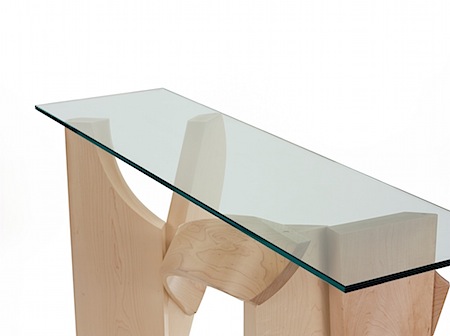
I began to think about ways to bring the glass into the composition. I used tow moments to embrace and wrap the ends of the glass in wood. This approach started to make the glass an integral part of the composition, not just a functional surface.
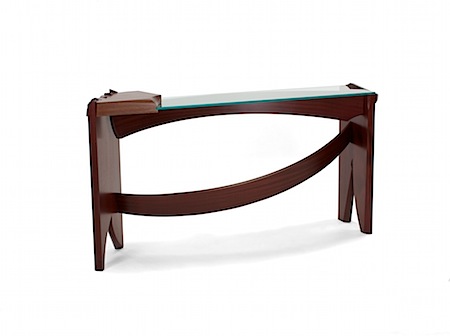
Cocktail Table
Sapele and Glass 20″H x 62″W x 32D
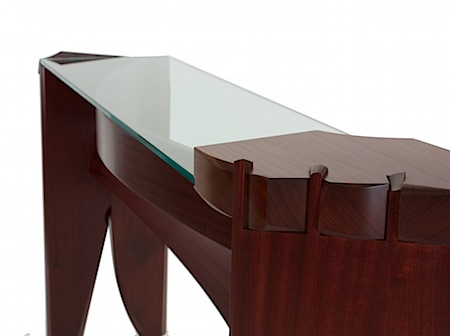
The progression continued with the cocktail table. I used a singular moment to bring the leg and stretcher overt the tables surface.
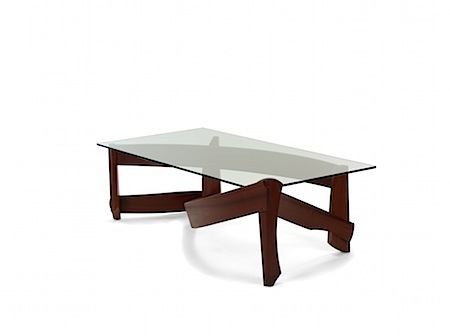
Curved Dovetail Console Table
Sapele and Glass 38″H x 70″W x 15″D
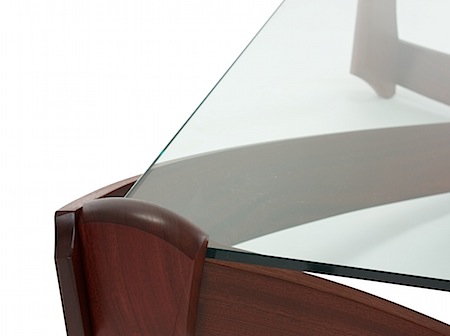
This is a bit out of order,but in terms of progression it is next. I now have taken the step to have the glass cut to a unique shape. The result is that the glass becomes part of the composition in a different way. I felt that this piece was very successful and i am feeling emboldened to pursue a larger table with a piece of shaped glass.
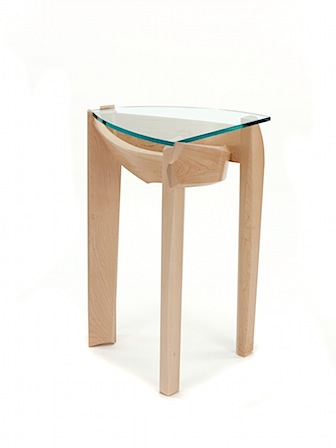
Pedestal Table #9
MAple and Glass 30″H x 20″W x 20″D
